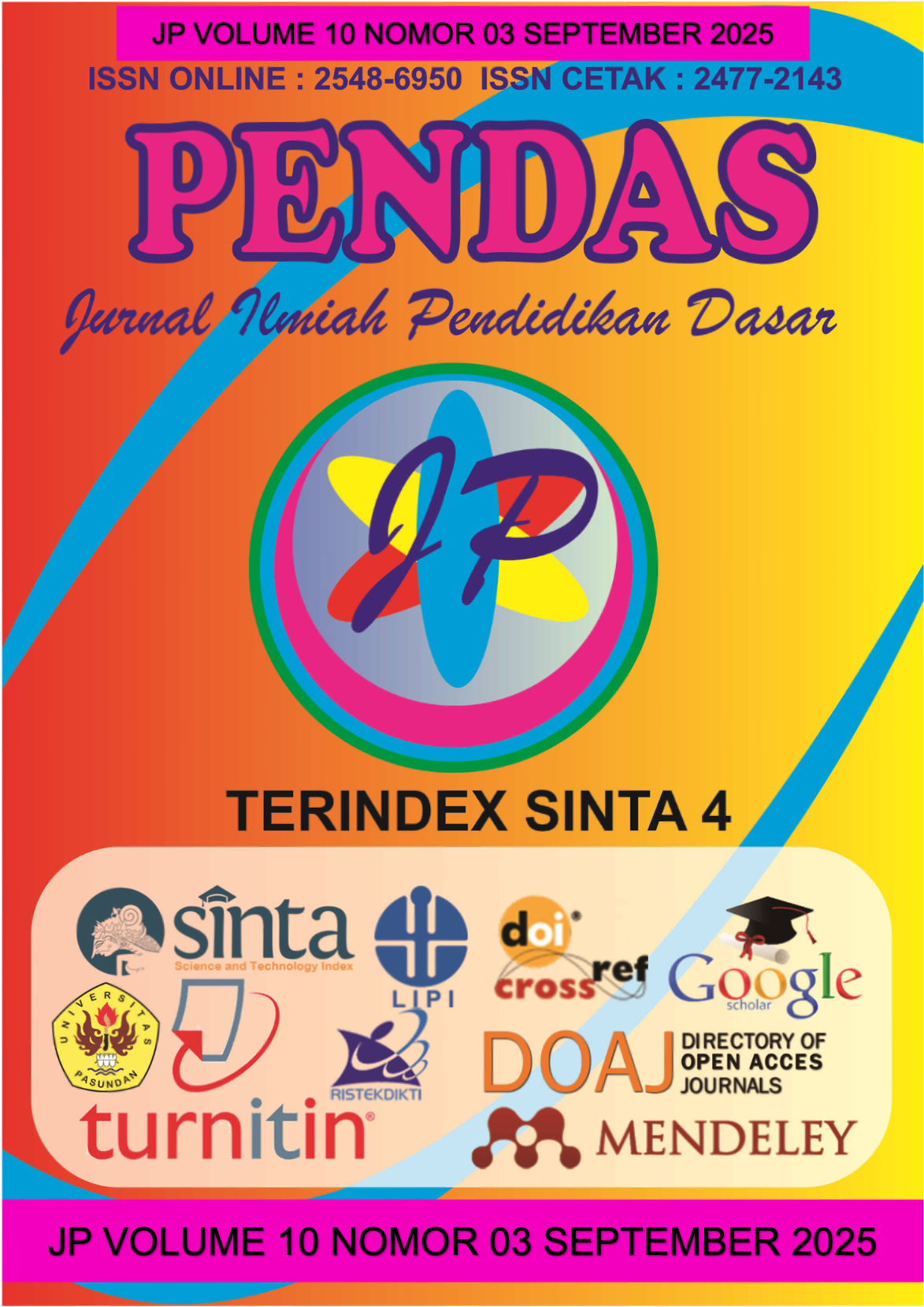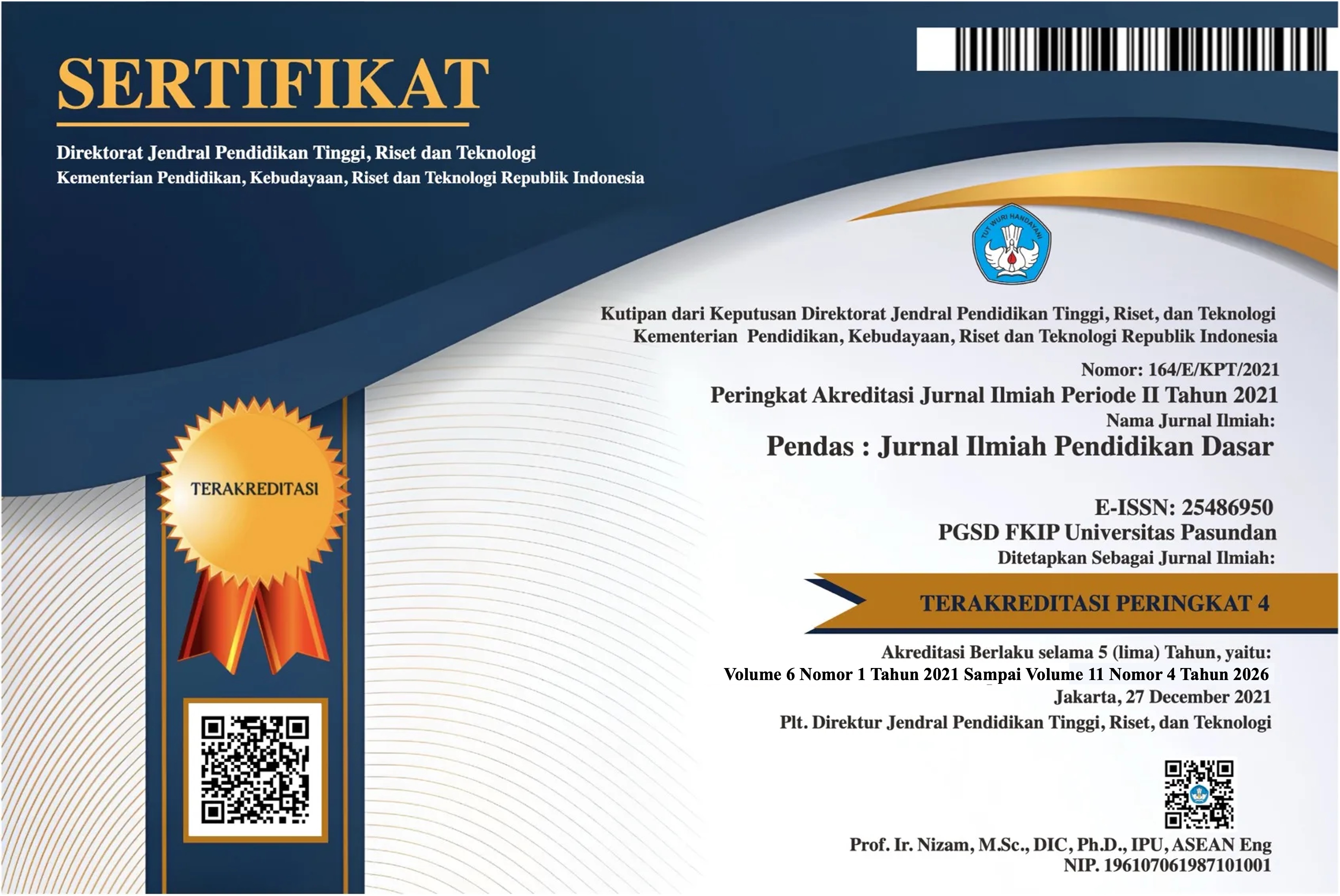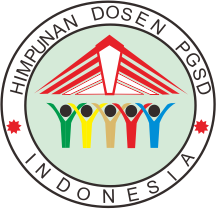PENGEMBANGAN MEDIA PEMBELAJARAN BERBASIS CVR UNTUK MENINGKATKAN PENGALAMAN BELAJAR IMERSIF DI SD
DOI:
https://doi.org/10.23969/jp.v10i03.33351Keywords:
Development, Learning Media, CVR, Immersive Learning Experience, Elementary SchoolAbstract
This research aims to develop Computer Virtual Reality (CVR)-based learning media to enhance immersive learning experiences in elementary schools. The background of this research is an innovation in learning media that can create a more interactive, contextual, and enjoyable learning environment in accordance with the demands of the Independent Curriculum. The research method used is the ADDIE (Analysis, Design, Development, Implementation, Evaluation) with the research subjects consisting of 21 fourth-grade students of class IV B at SDN 2 Suryawangi. The research instruments included an expert validation questionnaire, student and teacher response questionnaires, and learning outcome tests (pretest and posttest). Validation results indicate that the CVR learning media falls into the “very good” category. Subject matter experts gave a score of 8863 with an average of 88.63, while media experts scored 9285 with an average of 92.85. Twenty-one students' responses yielded a score of 9642 with an average of 96.42, while teachers' responses yielded a score of 9166 with an average of 91.66, both of which fall into the “very good” category. Pretest and posttest results showed improvement, with a score of 9243 with an average of 92.43. These results indicate that the CVR media is not only feasible and valid for use but also effective in improving learning outcomes while providing an immersive learning experience for students. Therefore, it can be concluded that CVR-based learning media is effective in improving the quality of learning in elementary schools.
Downloads
References
Anwar F & Pajarianto, dkk. (2022). Pengembangan Media Pembelajaran “Telaah Perspektif Pada Era Society 5.0. In Pengembangan Media Pembelajaran.
Collins, S. P., Storrow, A., Liu, D., Jenkins, C. A., Miller, K. F., Kampe, C., & Butler, J. (2021). No Title 済無No Title No Title No Title. 10(September), 167–186.
Firmadani, F. (2020). Media Pembelajaran Berbasis Teknologi Sebagai Inovasi Pembelajaran Era Revolusi Industri 4.0. Prosiding Konferensi Pendidikan Nasional, 2(1), 93–97. http://ejurnal.mercubuana-yogya.ac.id/index.php/Prosiding_KoPeN/article/view/1084/660
Hartawan, I. N. B., Rahayu, N. L. W. S., & Suryati, K. (2025). Implementasi Virtual Reality Untuk Pembelajaran Imersif Di Sekolah Dasar Kabupaten Bangli. Jurnal WIDYA LAKSMI, 5(1), 124–131.
Khalidy, D. Al, Faqih, A. F., Haswin, A., Bachri, S., Sumarmi, S., Utaya, S., & Putra, A. K. (2024). Inovasi Media Pembelajaran: Pelatihan Pengembangan Virtual Reality untuk Meningkatkan Immersive Learning. Abdimas Universal, 6(2), 432–441. https://doi.org/10.36277/abdimasuniversal.v6i2.520
Sucitra, A., Latif, A., Pendidikan, A., & Negeri Makassar, U. (2025). Pengaruh Penerapan Media Pembelajaran Interaktif Berbasis Augmented Reality Terhadap Motivasi Dan Hasil Belajar Peserta Didik Pada Mata Pelajaran Ipas Kelas V Di Upt Spf Sd Negeri Mangkura V. Jurnal Ilmiah Pendidikan Dasar, Volume 10 Nomor 01, 222–243.
Widianto, E. (2021). Pemanfaatan Media Pembelajaran Berbasis Teknologi Informasi. Journal of Education and Teaching, 2(2), 213. https://doi.org/10.24014/jete.v2i2.11707
Downloads
Published
Issue
Section
License
Copyright (c) 2025 Pendas : Jurnal Ilmiah Pendidikan Dasar

This work is licensed under a Creative Commons Attribution 4.0 International License.



















